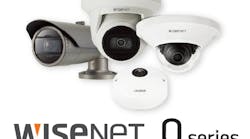Since the advent of IP technology in security devices, calls for the development of standards to facilitate the integration of various systems has become commonplace throughout the security industry. After all, the whole point of deploying networked solutions is to be able to seamlessly tie them together to create a common operating picture and take advantage of features that deliver ROI beyond that which legacy, analog-based technologies could provide.
And though the industry has made great strides in standardization in recent years, much work still remains and the evolution of technology in the time since IP became prevalent in the marketplace means that there are new set of challenges that need to be addressed by manufacturers. For example, the proliferation of network surveillance cameras and the massive amounts of data they generate has placed a premium on cybersecurity and privacy safeguards, which were somewhat overlooked when the adoption IP cameras began to take hold. Given their ubiquity, cameras have unfortunately become frequent targets of cyber-attacks with hackers looking to comprise them for financial gain or to simply eavesdrop on people.
To address these and other challenges facing security products in this Internet of Things era, several industry stalwarts, including Bosch Building Technologies, Hanwha Techwin, Milestone Systems, Pelco, and VIVOTEK, recently joined forces to crate the Open Security & Safety Alliance. Officially launched last September, the Alliance’s stated goal is to outline specifications for a common standardized platform for security and safety solutions that is accessible to everyone.
SecurityInfoWatch (SIW) recently sat down with Johan Jubbega, Senior VP and General Manager at Bosch Building Technologies and President of the Open Security & Safety Alliance, to discuss how their mission differs from that of other industry standards bodies and the goals they hope to accomplish in the short-term.
SIW: What was the impetus for forming the Alliance?
Jubbega: The Alliance was formed to bring together a significant share of market players to define one standard to tackle common challenges like data security and privacy, seamless integration of security devices and easy consumption of data. Today's market for security and safety solutions, as it continues to be influenced by the Internet of Things (IoT) and the aggregation of data, is very fragmented. Some device manufacturers offer a short-term “quick-fix” rather than focusing on a long-term solution. The majority of available engineering resource is being invested in tackling these common challenges, innovation is being overlooked, causing market players ,such as app developers, to resist collaboration due to a low return on investment. To fuel innovation, the market needs a new framework or standard that enables market players to focus on the kind of innovation that adds real value for customers.
SIW: How does the Alliance differ from some of the other industry standards organizations, such as ONVIF and PSIA?
Jubbega: We believe the purpose of the Alliance is unique; it focuses on developing a framework outlining standards and specifications for common components, including an industry-specific operating system, IoT infrastructure, collective approach for data security and privacy, and a drive for improved levels of performance. In addition, the Alliance aims to promote new business models to encourage the adoption of more data-centric services by users. ONVIF is an open industry forum that provides and promotes standardized interfaces for effective interoperability of IP-based physical security products. This scope is different compared to the one of the Open Security & Safety Alliance.
We see initiatives like ONVIF and PSIA supporting one another in shaping the industry. We also expect ONVIF and the Open Security & Safety Alliance to be complementary and ONVIF profiles may be adopted by the Alliance if they contribute to our purpose.
SIW: What are some of your immediate goals for the Alliance?
Jubbega: Current expectation is that the first commonly-agreed standards and specifications will be published in the first half of 2019. Since we’ve been sharing the purpose of the Alliance and initial standards and specifications with interested parties for approximately 12 months already, we anticipate that a number of Alliance members will be demonstrating their first concept offerings at ISC West 2019.
SIW: How do you plan to build momentum for the Alliance and its goals moving forward?
Jubbega: Although the Alliance was launched in September, over the last year the founding members have undertaken an ongoing dialogue with over 50 companies, varying from early adopters, system integrators and distributors to established technology companies, to verify initial concepts and ensure the Alliance covers the needs of all relevant parties. SAST, one of the early Alliance members, is committed to providing an open digital marketplace and free Android-based operating system, allowing app developers to monetize those applications compatible with multiple solutions from Alliance members. This combined with continuous activities to build awareness and active recruitment of new members will help build momentum for the Alliance and the realization of our goals.
SIW: How can industry companies become members and/or work with the Alliance?
Jubbega: The Alliance is accessible to all types of industry players, from device manufacturers, consultants and service providers, to application and software developers as long as they are supporting the overall vision and philosophy of the Alliance. Examples of companies likely to participate and that will directly benefit include:
- Device manufacturers
- Software developers
- Device component manufacturers including System on Chip (SoC) manufacturers
- System integrators
- Installers and commissioners
- Service providers
- Management software providers
- Consultants and specifiers
- Distributors
Interested companies can find more information about the different membership levels and benefits by visiting, https://www.opensecurityandsafetyalliance.org/Join.
About the Author:
Joel Griffin is the Editor of SecurityInfoWatch.com and a veteran security journalist. You can reach him at [email protected]


